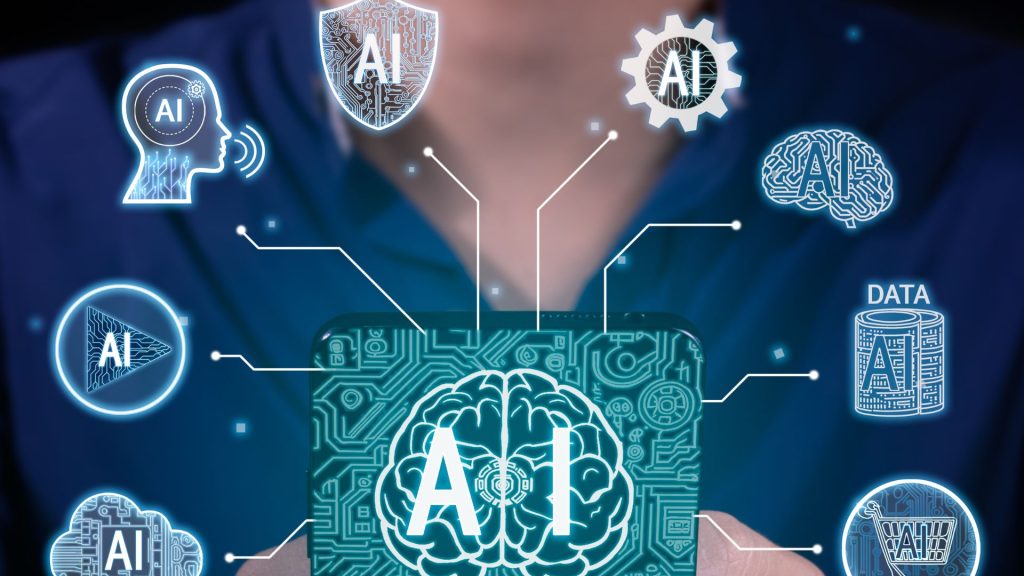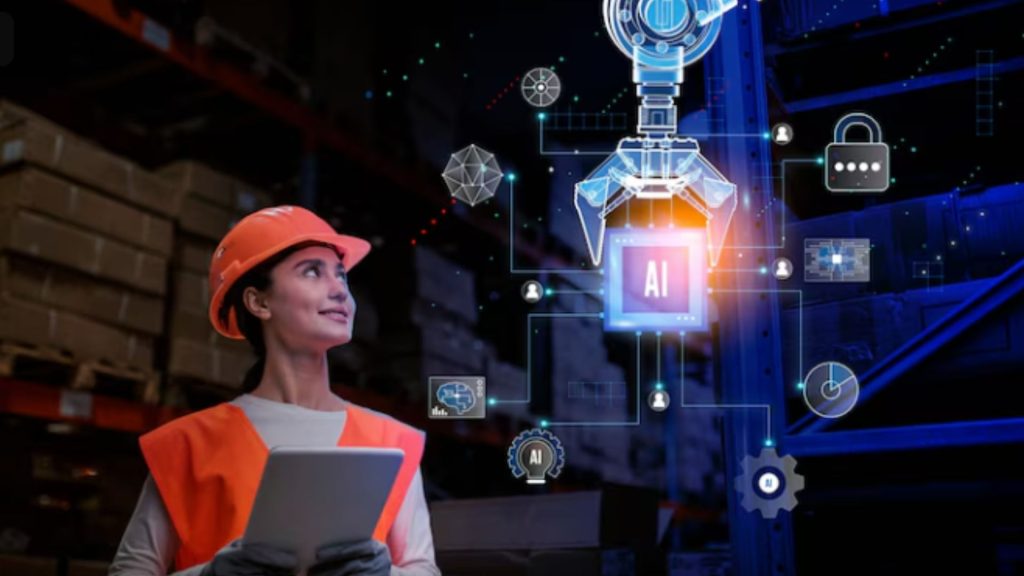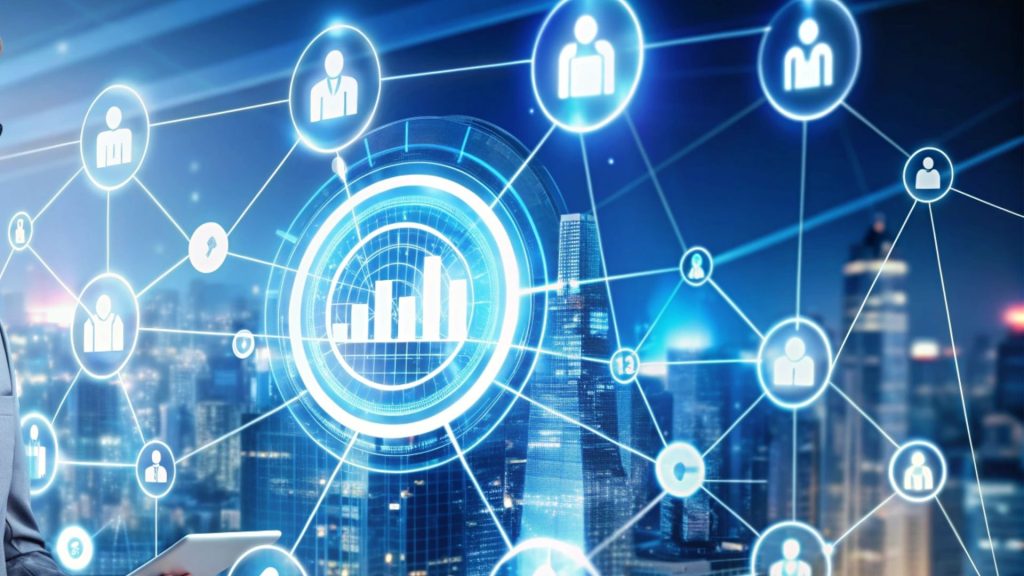AI-Powered Cities: Building the Smart Urban Future

The integration of artificial intelligence (AI) into customer experience strategies is redefining the boundaries of customer interaction across various industries. As AI technology evolves, its influence in shaping and enhancing customer experiences is becoming increasingly significant. This article delves into the transformative power of AI in customer experience and what businesses need to know to stay ahead.
AI excels in analyzing large datasets to derive insights about individual customer preferences and behaviors. This capability enables businesses to deliver personalized experiences at scale, offering products, services, and interactions that are uniquely tailored to each customer. From personalized marketing messages to custom product recommendations, AI makes it possible to meet the unique needs of millions of customers simultaneously.
AI-powered chatbots and virtual assistants are becoming the first point of contact in customer service interactions. These AI systems can handle a wide range of tasks from answering FAQs to solving complex issues, providing quick and efficient service. As these tools learn from each interaction, they become better at delivering accurate and helpful responses, improving customer satisfaction.
AI helps in unifying customer experiences across multiple channels. By tracking and analyzing customer interactions across web, mobile, and in-store platforms, AI enables a seamless transition that feels consistent and integrated to the customer. This not only enhances the customer experience but also builds stronger brand loyalty.
At the core of AI’s impact are machine learning algorithms and advanced data analytics. These technologies enable the processing and interpretation of vast amounts of customer data, transforming it into actionable insights that can drive decision-making and strategic improvements in customer service.
NLP technologies are crucial in understanding and generating human language, allowing AI systems to communicate effectively with customers. This is evident in chatbots and AI customer service agents that interact with customers in a natural, conversational manner.
AI’s ability to predict future customer behaviors and preferences by analyzing past data is revolutionary. This not only helps in anticipating customer needs before they arise but also in proactively addressing potential issues, thus enhancing the overall customer experience.
As AI systems rely heavily on customer data to function effectively, ensuring the privacy and security of this data is paramount. Businesses must adhere to stringent data protection regulations and ethical standards to maintain trust and protect their customers’ information.
Integrating AI into existing customer experience strategies can be complex. It requires significant investment in technology and training, as well as a cultural shift towards data-driven decision making.
Balancing AI automation with the irreplaceable human element of customer service is crucial. While AI can handle routine tasks effectively, human empathy and understanding are essential for dealing with complex customer needs and emotions.
As AI technology continues to advance, its role in customer experience will only grow deeper and more integral. Future trends may include more sophisticated AI personal assistants, greater use of AI in customer behavior prediction, and more immersive virtual reality experiences. These advancements will further redefine the standards of customer interaction and satisfaction.
Businesses that understand and leverage the capabilities of AI in enhancing customer experience will not only stay competitive but will also set new benchmarks in customer engagement and satisfaction.

The rise of artificial intelligence (AI) in entertainment is reshaping how content is created, distributed, and consumed. Machine learning (ML), a subset of AI, has particularly significant implications for the movie and television industries. From scriptwriting to post-production and viewer recommendation systems, AI’s influence is pervasive and growing. This article explores the various ways in which machine learning is revolutionizing the entertainment landscape.
AI tools are now able to analyze vast databases of film scripts to identify what makes a screenplay successful. This analysis can suggest plot points, character development arcs, and even dialogues that are more likely to resonate with specific audiences.
Machine learning algorithms can analyze past performances and audience reactions to help directors cast actors who are best suited for a particular role. This technology is also being used to enhance actors’ performances digitally in post-production, ensuring optimal delivery.
AI is heavily used in creating realistic and complex visual effects that would be too time-consuming and costly to produce manually. For example, ML algorithms can automatically generate background crowds and environments or enhance details in animations that give life to intricate scenes.
AI systems can assist in editing by suggesting cuts, transitions, and even integrating visual effects based on the director’s style and the narrative’s pacing requirements. This can significantly speed up the post-production process.
Machine learning models are capable of composing music scores and sound effects tailored to the emotional cues of a scene. These AI systems analyze existing scores and viewer reactions to them to create audio that enhances the cinematic experience.
Perhaps the most recognized use of AI in entertainment is in recommendation engines. Platforms like Netflix and Amazon Prime use machine learning to analyze viewing patterns and suggest shows and movies that individual users are likely to enjoy.
Some studios are experimenting with AI to create interactive narratives where viewers can choose the storyline’s direction. Machine learning helps predict the choices viewers might make, allowing for smoother storytelling transitions.
AI analyzes viewer data to help studios and networks create targeted advertising campaigns. Machine learning algorithms can predict which demographics will be most interested in a movie or show, optimizing marketing budgets by focusing on the most receptive audiences.
Machine learning also plays a role in deciding how best to release titles across different platforms and regions, maximizing viewership and revenue based on viewing trends and content popularity.
As with all AI applications, there is a risk of bias in machine learning models that can lead to unfair representation or stereotyping in content creation and distribution. Ensuring diversity in training data and continuous monitoring for bias is essential.
The use of data in AI systems raises privacy concerns, particularly regarding how viewer data is collected, used, and stored. Adhering to data protection laws and maintaining transparent practices is crucial for maintaining consumer trust.
Looking ahead, the role of AI in entertainment is set to grow, with more sophisticated applications on the horizon. This includes the potential for entirely AI-generated films and shows, where machine learning algorithms could handle everything from scriptwriting to directing and post-production.
Machine learning is undeniably transforming the entertainment industry, making processes more efficient and personalized while also opening up new possibilities for content creation. As this technology advances, it promises to deliver richer, more engaging viewing experiences that were previously unimaginable.

In the modern business landscape, machine learning (ML) is not just an advantage; it is a necessity. This transformative technology is reshaping industries by enabling smarter decision-making, enhancing customer experiences, and streamlining operations. Here, we explore the multifaceted benefits of machine learning and why your company should embrace it now.
Machine learning is a subset of artificial intelligence (AI) that enables systems to learn from data, identify patterns, and make decisions with minimal human intervention. ML models improve over time, adapting to new data without being explicitly programmed to do so.
One of the primary advantages of machine learning is its ability to sift through massive amounts of data and extract actionable insights. Businesses can use ML to uncover trends and patterns that are not obvious to human analysts, helping them to make more informed decisions.
Machine learning automates repetitive tasks, freeing up employees for higher-value work. This includes everything from customer service responses to inventory management, which can all be optimized with ML to reduce errors and increase efficiency.
ML algorithms can personalize customer interactions based on their behavior and preferences, leading to more effective marketing and higher customer satisfaction. This personalization can range from product recommendations to customized marketing messages, all tailored to the individual customer’s needs.
Machine learning excels at predictive analytics, which involves using historical data to predict future outcomes. Businesses use ML to forecast sales trends, demand spikes, and even potential supply chain disruptions, allowing them to plan more effectively and mitigate risks.
For businesses new to machine learning, it’s advisable to start small. Identify areas where ML can have an immediate impact, such as customer service or sales forecasting, and gradually expand as you see results.
Selecting the right machine learning tools and partners is crucial. Look for platforms and consultants with expertise specific to your industry, and ensure they offer scalable solutions that can grow with your business.
Investing in training for your team is essential to fully leverage machine learning. This includes not only technical training but also training on how to interpret ML insights and integrate them into business strategies.
Implementing ML requires handling sensitive data. Ensuring the privacy and security of this data is paramount, and businesses must adhere to regulations and best practices to protect their information.
While machine learning can be cost-effective in the long run, initial investments and ongoing maintenance can be significant. Careful planning and management are required to ensure that the costs are aligned with the expected benefits.
Looking ahead, machine learning is set to become even more integral to business operations. Advances in technology will make ML tools more accessible and affordable, enabling even small businesses to benefit from AI-driven insights and automation.
Machine learning offers a competitive edge that no modern business can afford to ignore. By automating processes, enhancing data analysis, and improving customer engagement, ML not only boosts efficiency but also drives innovation. The time to adopt machine learning is now, as it continues to be a key differentiator in the digital age.

In the battle against climate change, artificial intelligence (AI) is emerging as a crucial ally. With its capability to analyze large datasets and predict future patterns, AI is revolutionizing our approach to environmental management. This article delves into how AI technologies are being utilized to combat climate change, from optimizing energy use to monitoring deforestation and aiding in climate research.
AI is instrumental in making energy systems more efficient. Smart grids powered by AI optimize the distribution of renewable energy based on supply and demand dynamics. AI algorithms manage and reduce energy consumption in buildings and industrial processes, significantly lowering greenhouse gas emissions.
AI is accelerating the development of renewable energy technologies. By predicting weather conditions, AI enhances the efficiency of solar and wind energy production. AI also helps in designing more efficient wind turbines and photovoltaic cells, making renewable sources more viable and cost-effective.
AI-driven technologies are revolutionizing agriculture by enabling more sustainable practices. Precision farming techniques, such as AI-controlled drones and sensors, monitor crop health and soil conditions, reducing the need for water, fertilizers, and pesticides. This not only decreases agricultural emissions but also boosts productivity and sustainability.
AI is crucial in monitoring environmental compliance and forest conservation efforts. Satellite images analyzed by AI can detect changes in forest cover in real-time, identifying illegal logging activities and providing data necessary for enforcement actions.
AI-powered sensors and networks monitor air quality across vast areas, detecting pollutants and their sources with high precision. This real-time data allows for quicker responses to pollution incidents and better regulation of industrial emissions.
AI improves the accuracy of climate models by handling complex variables and simulating multiple scenarios. This helps scientists predict climate changes more accurately and assess potential impacts, guiding policymakers in crafting informed climate strategies.
AI tools analyze data from ocean sensors and satellite imagery to monitor marine environments and wildlife, assessing the health of ecosystems and the impact of human activities. This information is vital for protecting endangered species and conserving biodiversity, which is crucial for maintaining the planet’s health.
While AI offers significant advantages, the accuracy of its predictions depends on the quality of data. Biases in data can lead to inaccurate conclusions, potentially diverting resources from effective climate actions.
AI systems themselves consume considerable energy, particularly for training large models. The environmental impact of running these systems is non-trivial and must be managed responsibly.
Combining AI with the Internet of Things (IoT) can enhance data collection and analysis capabilities, providing more granular insights into environmental conditions and enabling more precise interventions.
There is a growing call for international collaboration on AI strategies to address climate change. By sharing innovations and aligning goals, countries can leverage AI more effectively to tackle global environmental challenges.
Artificial intelligence has the potential to be a game-changer in our fight against climate change. By harnessing AI’s power, we can enhance our understanding of environmental issues, improve regulatory compliance, and develop sustainable practices that contribute to global ecological balance. The journey is complex and fraught with challenges, but the promise AI holds for our planet is too significant to ignore.

Artificial intelligence (AI) is not just revolutionizing industries; it’s paving the way for a more inclusive global society. From accessibility enhancements to bridging language gaps and promoting equitable healthcare, AI’s impact is profound and far-reaching. This article explores how AI technologies are being harnessed to foster inclusivity and equality, addressing key areas where its influence is most noticeable.
AI is transforming assistive technologies to better serve people with disabilities. Innovations like AI-powered hearing aids that filter out background noise or software that converts text to speech enhance daily interactions and accessibility. AI-driven applications like Seeing AI help visually impaired users to interpret their surroundings via audio descriptions, showcasing how AI can bridge significant accessibility gaps.
AI’s ability to adapt and personalize learning has opened doors for students with learning disabilities. Adaptive learning software can modify content delivery based on the learner’s pace and style, making education more accessible to everyone, regardless of their learning capabilities.
AI-driven real-time translation tools are breaking down language barriers, allowing people from different linguistic backgrounds to communicate effortlessly. For instance, platforms like Google Translate and Microsoft Translator have become more accurate and nuanced, thanks to advances in AI, promoting cross-cultural communication and understanding.
AI is also playing a role in promoting cultural sensitivity through algorithms that are designed to understand and respect cultural differences. These technologies are being used in content customization, ensuring that digital content is appropriate and respectful of all cultural norms, thus fostering a globally inclusive environment.
AI’s predictive analytics are being used to forecast outbreaks and health risks in underserved regions, guiding preemptive actions and resource allocation. This use of AI in public health initiatives significantly contributes to healthcare equity, ensuring that medical assistance is dispatched efficiently and equitably.
AI enhances telemedicine by enabling remote diagnostics, which can be particularly transformative for rural or underprivileged areas lacking in medical facilities. AI-powered diagnostic tools can analyze symptoms, prioritize patient care based on severity, and recommend treatments, making quality healthcare accessible from a distance.
While AI has the potential to promote inclusivity, there is also a risk of perpetuating biases if not managed carefully. Significant strides are being made to create ethical AI systems that identify and eliminate biases in decision-making processes. By training AI models on diverse data sets and continuously monitoring for bias, developers are working towards more equitable AI solutions.
Governments and organizations are increasingly aware of the need for inclusive AI policies that govern the development and deployment of AI technologies. These policies aim to ensure that AI advancements benefit all segments of society, particularly those who might otherwise be marginalized.
AI is more than just a technological breakthrough; it’s a catalyst for social change, driving inclusivity across various sectors. As we harness AI’s full potential, it’s crucial to continue addressing the ethical challenges that come with it, ensuring that AI not only transforms industries but also promotes a more inclusive and equitable world for everyone.

In today’s fast-paced business environment, the integration of artificial intelligence (AI) into automation is reshaping how industries operate. AI-powered automation is not just a tool; it has become a fundamental component of strategic planning, offering unprecedented efficiencies and capabilities that were unimaginable just a decade ago. This article explores the various dimensions in which AI-driven automation is transforming the workplace, detailing its implications, benefits, and potential future trends.
AI-powered automation brings about significant improvements in efficiency and productivity across multiple sectors. By leveraging algorithms that can analyze vast amounts of data far more quickly than humans, AI automates complex processes that would otherwise require considerable human resources. For example, in manufacturing, AI-driven robots can operate 24/7, producing goods with consistent quality and at a pace that significantly outstrips human capabilities.
AI systems can also aid in decision-making by providing insights derived from deep data analysis. In sectors like finance, AI algorithms can predict market trends and automate trading, reducing risks and increasing gains. Such capabilities allow businesses to make informed decisions swiftly, staying ahead of competitors and responding proactively to market dynamics.
In the service industry, personalization was once a resource-intensive task that could only be offered to select customers. However, with AI, companies can now offer personalized services to a large customer base. AI analyzes individual customer data to tailor services and products in real-time, enhancing customer satisfaction and loyalty.
While there is a common concern that AI automation might lead to significant job losses, the reality is more nuanced. AI often leads to the creation of new jobs, particularly in areas like AI maintenance, oversight, and enhancement. Furthermore, AI automation frees employees from repetitive tasks, allowing them to focus on more creative and strategic responsibilities, thus evolving their roles within the organization.
Despite its benefits, AI-powered automation presents several challenges. Privacy and security concerns are at the forefront, as reliance on AI requires handling vast amounts of data, potentially exposing sensitive information. Additionally, there are ethical considerations regarding bias in AI algorithms, which can perpetuate discrimination if not carefully managed.
Looking forward, AI-powered automation is poised to continue its growth trajectory, with several trends likely to dominate:
AI-powered automation is transforming the landscape of work in profound ways. By enhancing productivity, enabling better decision-making, and personalizing customer interactions, AI is not just changing how businesses operate; it’s redefining the possibilities of what businesses can achieve. As we navigate this evolving landscape, the focus must also encompass the responsible and ethical use of AI to ensure it serves the broader interests of society.

Artificial Intelligence (AI) is revolutionizing urban living by enhancing public safety, optimizing traffic management, improving energy efficiency, and fostering sustainability. This article delves into how AI-powered solutions are transforming cities into smarter, safer environments for residents.
AI is playing a critical role in enhancing urban security through predictive policing, real-time surveillance, and emergency response optimization.
Traffic congestion and inefficient public transport systems are major urban challenges. AI-driven solutions are making transportation more seamless and efficient.
AI is helping cities become more eco-friendly by optimizing energy consumption and waste management.

Artificial Intelligence (AI) and Machine Learning (ML) are reshaping the retail landscape by enhancing customer personalization, optimizing warehouse management, and revolutionizing logistics. This article explores how AI-driven solutions are transforming shopping experiences and streamlining backend operations.
AI algorithms analyze customer behavior to provide highly tailored shopping experiences. By leveraging data from past purchases, browsing history, and customer preferences, retailers can create personalized recommendations and targeted promotions.
Efficient warehouse management is essential for modern retail. AI optimizes inventory tracking, reduces errors, and enhances operational efficiency.
Machine learning enhances logistics by optimizing routes, improving delivery times, and reducing costs.

Artificial Intelligence (AI) is no longer a futuristic concept; it is actively transforming how businesses operate, make decisions, and stay competitive. With AI-powered analytics, automation, and machine learning, companies can process massive datasets, extract valuable insights, and react to changes in real-time. In this article, we explore how AI is enabling organizations to make smarter and faster decisions across various industries.
AI-powered analytics allows companies to sift through vast amounts of structured and unstructured data quickly. Instead of relying on traditional decision-making processes that are often slow and error-prone, AI enables organizations to analyze patterns, detect anomalies, and forecast trends efficiently.
AI-powered automation streamlines workflows, enhances efficiency, and reduces costs. By automating repetitive tasks, businesses can free up valuable time for employees to focus on strategic initiatives.
Examples of AI automation include:
AI enhances risk assessment by analyzing historical data and identifying potential threats. This is particularly useful in industries such as finance, healthcare, and cybersecurity.
AI is enhancing customer experiences through personalization and intelligent recommendations. Companies use AI to understand customer behavior and tailor their products and services accordingly.
Some examples include: